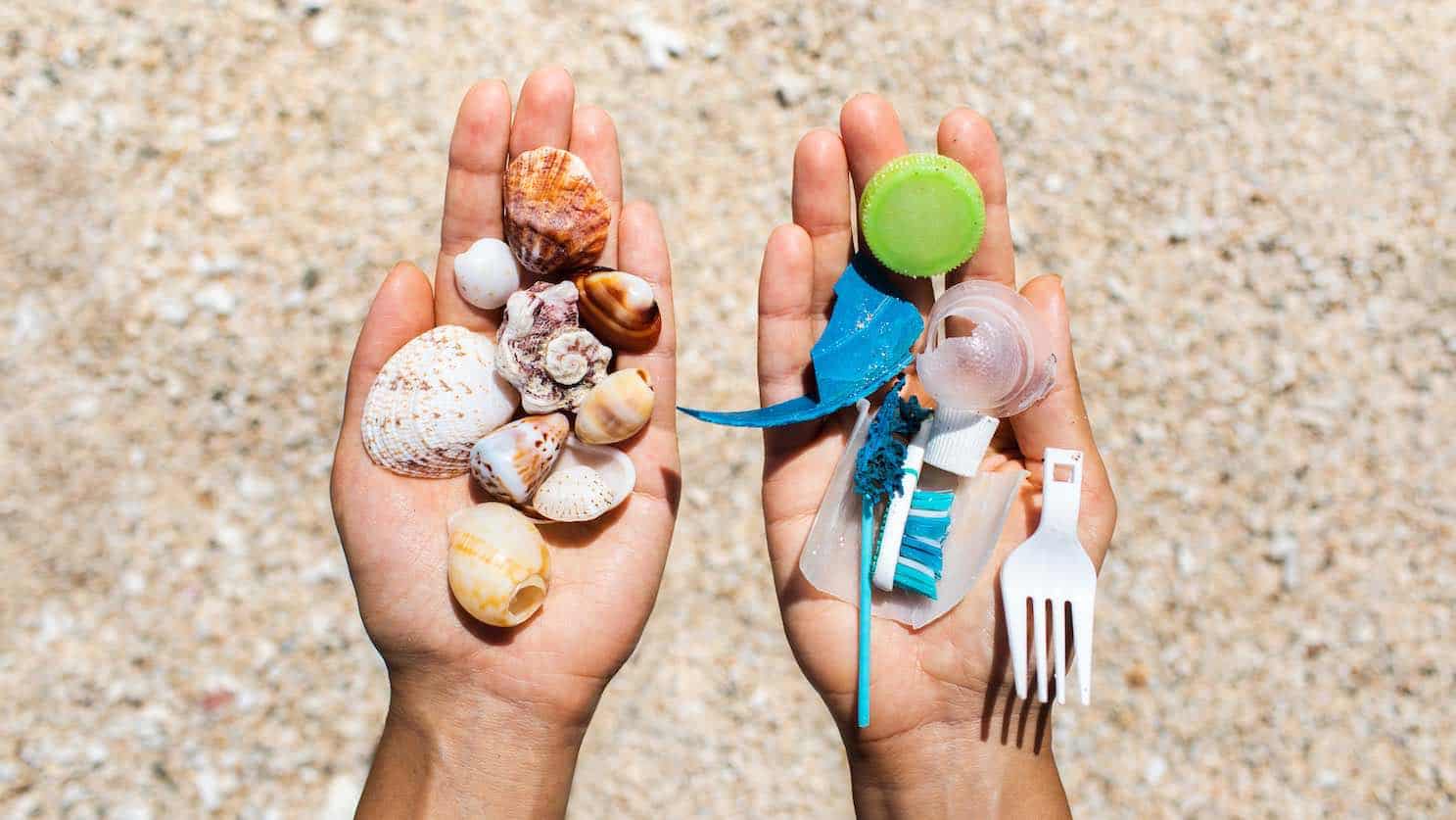Team Costhetics choked on its collective coffee the other day when we learned scientists predict there will be more plastic (by weight) than fish in the oceans by 2050.
According to an Ellen MacArthur Foundation report presented at the World Economic Forum:
- Plastics production has increased twentyfold since 1964
- Only 5% of plastics are recycled effectively
The report says “sweeping change in the use of plastic packaging would require cooperation worldwide between consumer goods companies, plastic packaging producers, businesses (and others).” Costhetics is pleased to report the beauty industry is part of that change, making sustainability a priority for the future of business and the planet.
Eco-Friendly Packaging: On Everyone’s To-Do List, Including Consumers
Colourful, eye-catching, and shiny, packaging is how products make themselves attractive to customers. Unfortunately it also makes them deadly for the environment. According to Zero Waste, in excess of 120 billion units of packaging are produced every year by the global cosmetics industry:
- Plastic tubes, caps, tubs, and lids
- Single use wrappers
- Paper inserts
- Cardboard sleeves
- Foam
- Mirrored Glass
It doesn’t have to be that way. L’Oreal and Albea, creator of the world’s largest range of beauty and personal care packaging, have just announced a breakthrough innovation. In place of traditional all-plastic cosmetic tubes, the companies have developed a “carton-based tube” made primarily of a “bio-based and certified paper-like material,” reports Cosmetic Business. L’Oreal is fast-tracking the change and “committed to improving the environmental or social profile of 100% of its (minimum impact) packaging by end 2020,” says Philippe Thuvien, VP of Packaging & Development at L’Oreal. That’s not all:
- L’Occitane is making its contribution with eco-conscious refillable pouches. Their goal is to increase the amount of recycled plastic in its packaging by 2025.
- Alima Pure now sells its foundation makeup in refillable compacts.
- Capatain Blankenships’ hair and body products are offered in packaging made from 100% recovered and recycled ocean plastic and recyclable paperboard.
Do consumers really care about sustainability? You bet they do! As reported in Australia: A Strong Commitment to Sustainable Beauty, the HRC Retail Advisory group says that
- 85% of Gen Z customers prefer eco-friendly products
Millennials, often referred to as the Green Generation, favour sustainable products for their more natural ingredients versus the traditional chemically-heavy products embraced by Baby Boomers who say they are more interested in results than in sustainability.
Reduce, Recycle, Reuse: That’s Beautiful
Each of us can take part in saving the Earth. In Beauty and the Environment: Eco-friendly Choices Made Easier, Harpers Bazaar UK recommends checking packages for logos from these organisations:
- Fair Trade International
- Rainforest Alliance
Additionally, to avoid contributing to the threat of plastics, plastics everywhere and not a drop (of water) to drink, consider that:
- Less packaging means more sea turtles – The convenience of one-time-use packets has taken over the food and beauty industries with devastating environmental effects. Do your part for Planet Earth by buying full size products whenever possible and turn them into single-use items with recyclable containers of your own.
- Proper recycling means less landfill – Check labels for recycling symbols and guidance on how to properly dispose of packaging and containers. Containers should be cleaned before recycling, by the way. Just a little soap and water is all it takes.
- Giving new life to old packages means less waste – When you can’t recycle, try up-cycling. Try to find alternative uses for packaging that can’t be recycled. With a little creativity, you can turn a beautiful cosmetics bottle into an object d’art, or at least a sweet little vase.
Sustainability in Products, Not Just Beauty Packaging
Sustainability goes beyond packaging. Look for sustainably sourced ingredients in the formulations of the products you choose. Sustainable or bio-based ingredients are natural ingredients produced from renewable raw materials:
- Natural oils – coconut, argan and avocado
- Plants – Soybeans and corn give us green cosmetic emulsifiers, foaming agents, and biocatalysts
- Bacteria – That’s right, bacteria, specifically the deinococcus bacteria, which can be used to create aromatic ingredients and pigments.
Typically, beauty formulations are made with petrochemical ingredients that are non-renewable:
- Aluminium – Found in things like antiperspirants, aluminium has been linked to breast cancer, osteoporosis, and even Alzheimer’s disease.
- BHA & GHT – These synthetic preservatives found in lipsticks and moisturisers can disrupt the human endocrine system.
- DBP – Dibuyl phthalate is a dye solvent frequently found in nail products. It can lead to genetic mutations and is toxic to human reproduction.
- P-hyenlenediamine – This is the ‘fancy’ name for coal tar dyes, petrochemicals linked to cancer.
- Preservatives that release formaldehyde – These same preservatives are used in toilet bowl cleaners and are known to be carcinogenic.
We All Want to Be Beautiful, But at What Cost?
Just like you, Planet Earth wants to be healthy and beautiful. “If we put as much thought into preserving our planet as we do into preserving ourselves, the world may be in a better place, not suffocating under a mountain of plastic,” Rowena Bird of the luxury brand Lush believes. As Winnie the Pooh says, “A little consideration, a little thought for others, makes all the difference.” Costhetics invites you to join us in the sustainable global beauty initiative that can make it so.
